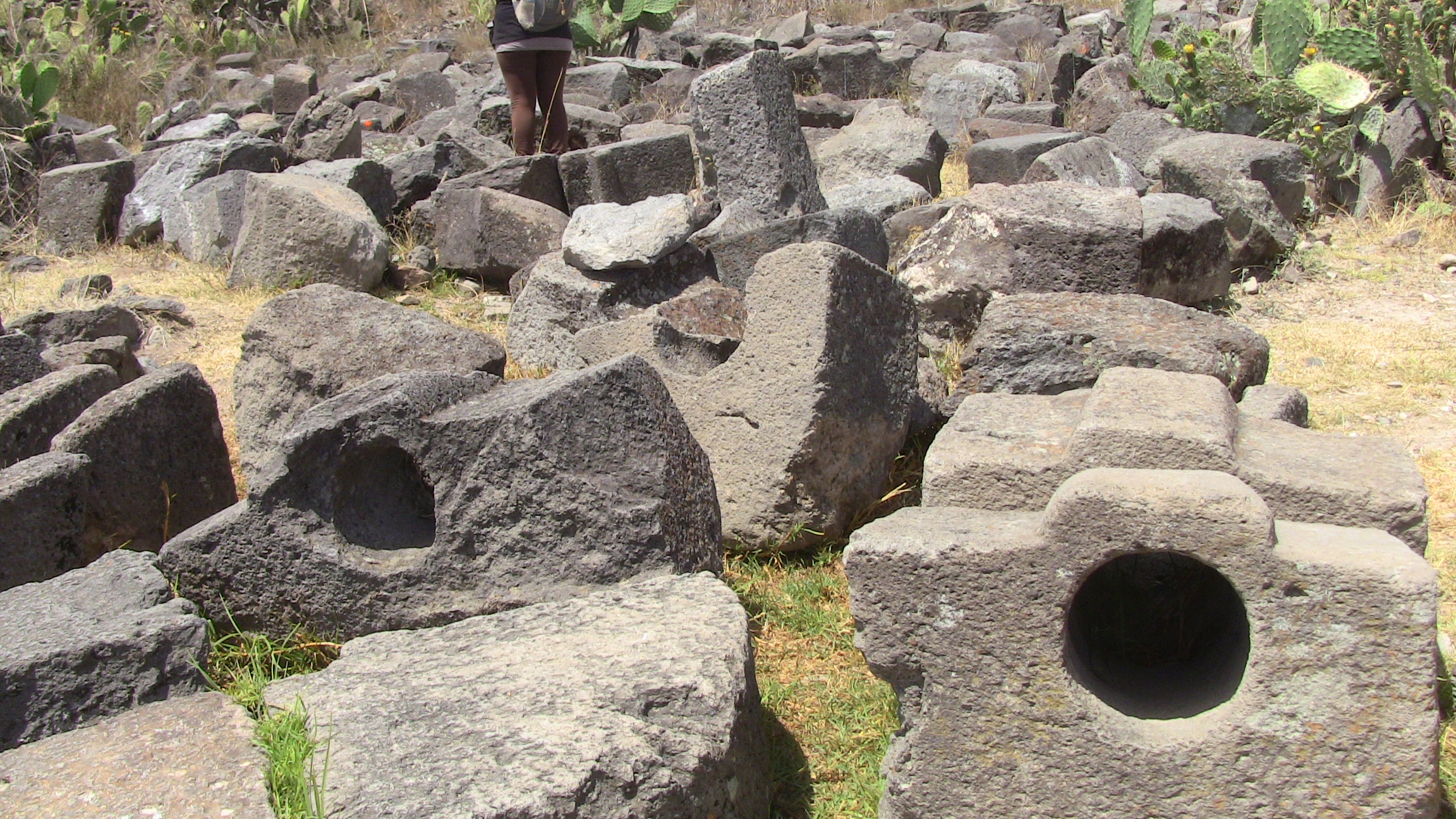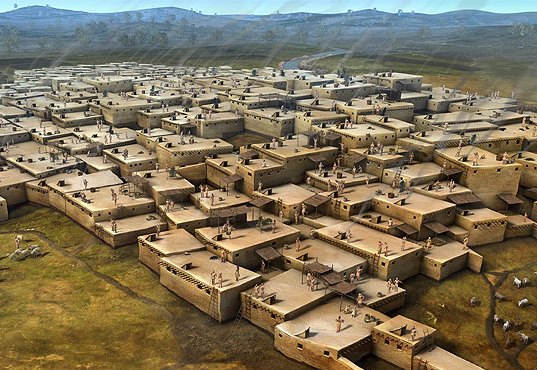Living in society, in populated areas, comes with countless advantages, but one major problem had to be solved
The following written content from Yarrow from an earlier post

Do you ever wonder how our humble modern toilet and plumbing systems evolved? We use our bathrooms every day, but most of us take the luxury of running water for granted. You might be surprised to discover that plumbing actually has a very long and fascinating history. In this article, we’ll explore the weird and wonderful history of plumbing from the time of early humans through to the modern era.
HISTORY OF PLUMBING TIMELINE
HISTORY OF PLUMBING IN THE NEOLITHIC ERA – 10,000-2100 BCE
Since the dawn of civilization, humans have needed and faced the logistical challenges of water supply and sanitation. Without a reliable source of clean water for drinking, humans find themselves vulnerable to dehydration, disease and death. The history of plumbing and modern sanitation started 10,000 years ago, when humans started to dig permanent water wells to gather and protect clean water. People would carry water from these wells in water vessels to share with the community.
It wasn’t until much later (3,000 BCE in fact) that humans built the first primitive toilet. The earliest lavatory, discovered at the Neolithic stone hut settlement of Skara Brae in the Orkney Islands, consisted of a small room, equipped with a stone drain used to carry waste away from the home to the nearby ocean. These drains were lined with tree bark to make them extra watertight.

HISTORY OF PLUMBING IN THE INDUS VALLEY – 2700 BCE
The Indus Valley civilization was one of the earliest civilizations to show evidence of public sanitation and plumbing as we understand it today. In fact, this innovative early civilization managed to construct an intricate system of underground drainage in a number of its cities. Their private and public baths featured many early innovations we consider to be modern, including drains, terra-cotta pipes encased in precisely laid brickwork, and even taps to control water flow.
HISTORY OF PLUMBING IN CHINA – 2000 BCE-851 CE
The ancient Chinese discovered deep drilled groundwater and used hollow bamboo reeds to carry fresh water. From at least the Han Dynasty onward, they used pig toilets – toilets which connected a latrine to a pigsty, where the pigs would eat the excrement. Much later, in 851 AD during the Tang Dynasty, the Chinese invented toilet paper. This toilet paper was made of large sheets of soft fabric, which only the Emperors and their family could use.
HISTORY OF PLUMBING IN ANCIENT MINOAN, GREEK AND ROMAN CIVILISATIONS – 1800-1500 BCE
On the island of Crete, Minoan Kings enjoyed bathrooms with hot and cold running water, ceramic bathtubs and the world’s first flushing toilet. The Minoan capital, Knossos, had an intricate sewer and plumbing system for bringing in clean water and taking out waste, made out of terracotta, with canals for overflow during heavy rain.
The ancient Greeks of Athens and Asia Minor were the next to develop indoor plumbing with pressurised water (including the invention of pressurised water for firefighting in Alexandria, Ptolemaic Egypt in the 4th century BCE).
The ancient Romans constructed an elaborate system of aqueducts and lead and clay pipes between 800 and 735 BC, to deliver water to homes, public wells, fountains, bathhouses and amphitheatres.

HISTORY OF PLUMBING IN THE MIDDLE AGES
From the fall of the Western Roman Empire until the early European Renaissance, Europe was plunged into a sanitation crisis, with widespread poor standards of personal hygiene, massive crowding problems, and deteriorating plumbing systems. Most sources of water inside towns were contaminated, leading to a huge rise in diseases such as tuberculosis, cholera, smallpox, yellow fever, and famously, the Black Plague. During this time, the Black Plague killed one-fourth of the world’s total population in just three short years from 1438-1441. During this time, people started to realise the importance of sanitation and develop safer strategies for waste and sewage disposal to combat the spread of disease.
THE INVENTION OF THE FLUSH MECHANISM – 1206 CE
Where did the flush mechanism of our modern toilet come from? It originated with a hand washing device invented by Arabian engineer Ismail Al-Jazari in 2106 CE. When the user pulled a lever, water would drain and the mechanism would refill the basin.
THE INVENTION OF THE FIRST FLUSHABLE TOILET – 1596 CE
The first modern flushable toilet was invented in 1596 by Sir John Harington, an English courtier in Queen Elizabeth I’s court. Harington’s invention consisted of a 60 centimetre-deep oval bowl waterproofed with pitch, resin and wax. This early toilet and fed with water from an upstairs cistern and was not very drought-friendly, requiring 28 litres of water to flush.
HISTORY OF PLUMBING IN THE INDUSTRIAL REVOLUTION – 1760-1840 CE
The explosion of city growth in Industrial Era Great Britain led to poor hygiene and outbreaks of cholera due to untreated human waste flowing into the River Thames. During the London Great Stink of 1858, hot weather exacerbated the smell until the civil engineer Joseph Bazalgette designed and built an advanced sewer system to move the effluent beyond the metropolitan area, bringing an end to the cholera outbreaks in the city.
GROWING USE AND POPULARITY OF FLUSH TOILETS – LATE 1800S AND 1900S CE
Although the flush toilet was invented in 1596, the invention only became available for public use in the late nineteenth and early twentieth centuries.
In fact, the first patent for a flushing water closet was issued to watchmaker and inventor Alexander Cumming in 1775. Just under 100 years later, London plumber Thomas Crapper decided to meet the growing demand for bathrooms with flushing toilets by opening one of the very first bathroom showrooms in 1870. He was awarded nine patents for plumbing innovations during his lifetime, including three improvements to the flushing toilet.
FINAL THOUGHTS: IMPORTANCE OF PLUMBING
Let’s be honest: We often take the modern convenience of plumbing for granted, but clean water use has not always been a given. In fact, it was often restricted to an elite few. Unless you were an emperor or king, you likely had less than luxurious plumbing options!
Today, our humble modern toilet, bathroom and kitchen drains & pipes play an overlooked but crucial role in our wellbeing. By ensuring the safe delivery of water and waste, they help keep us healthy and disease-free and make our lives so much easier. Source Yarrow





